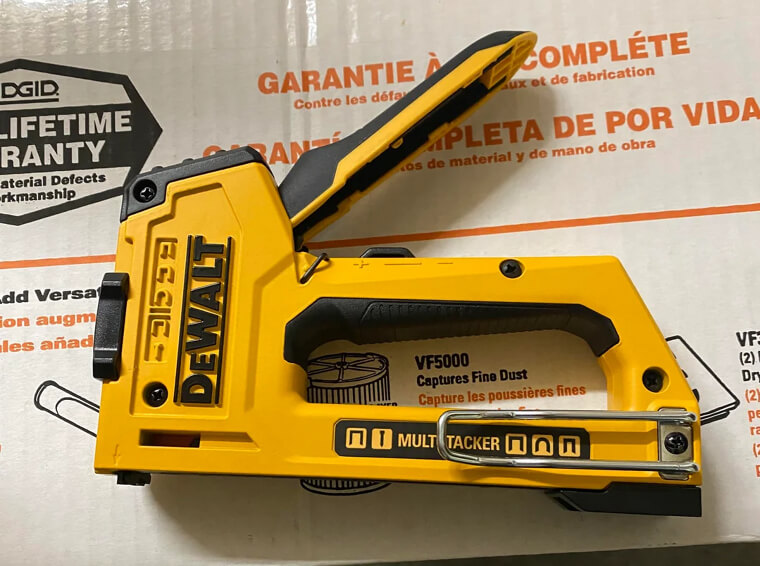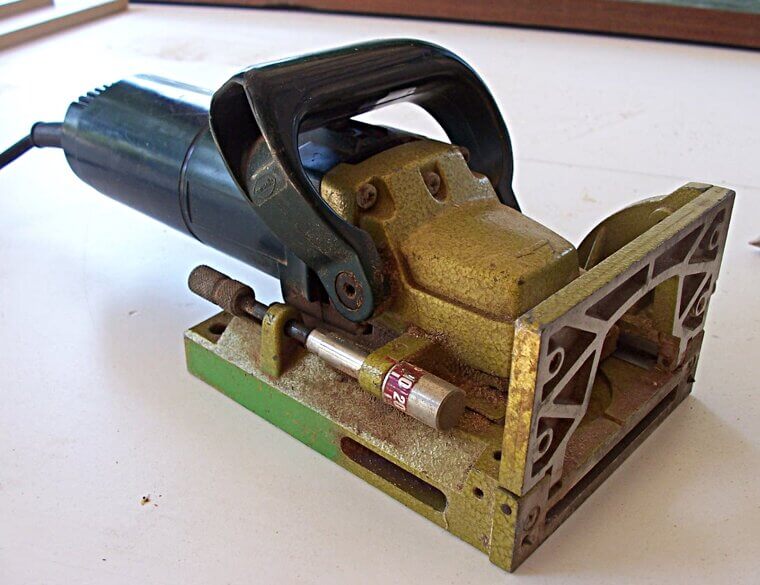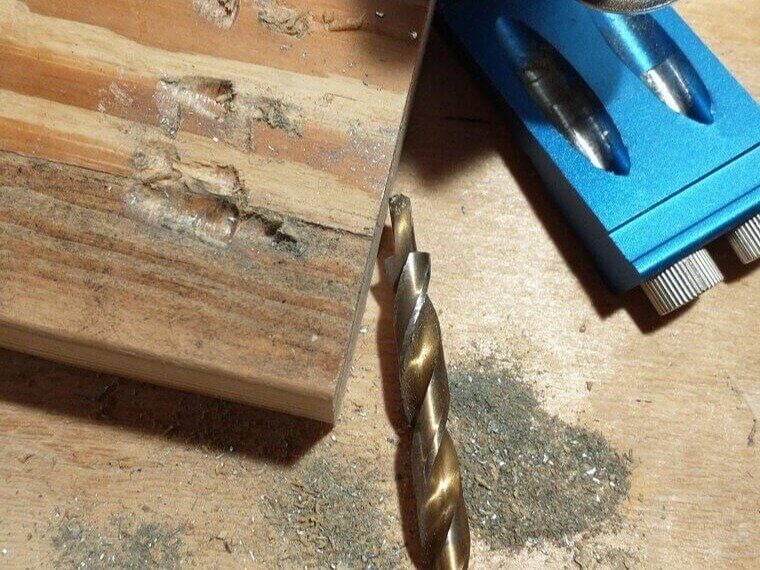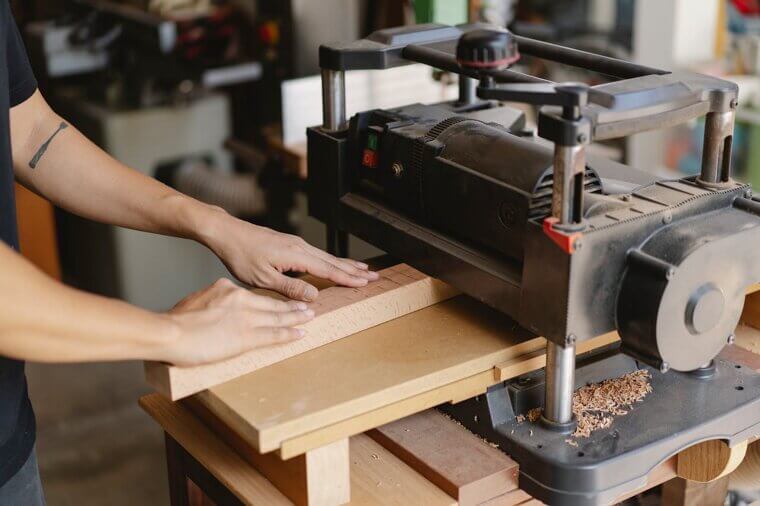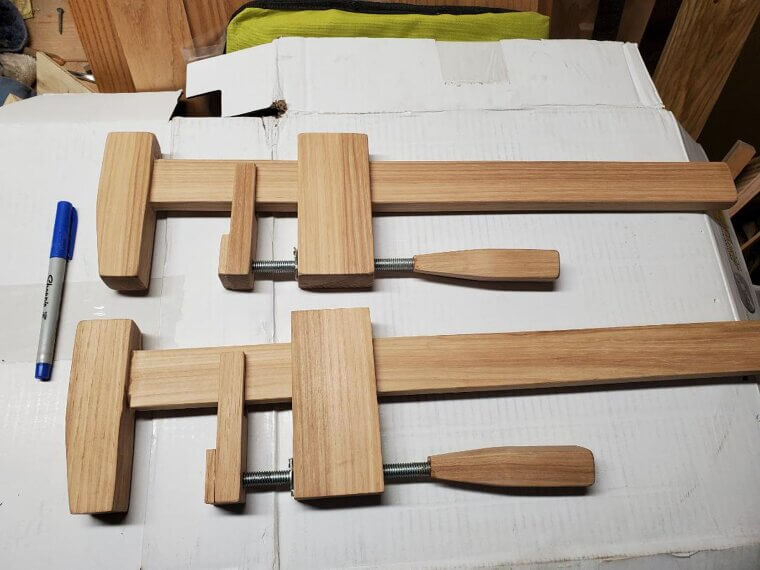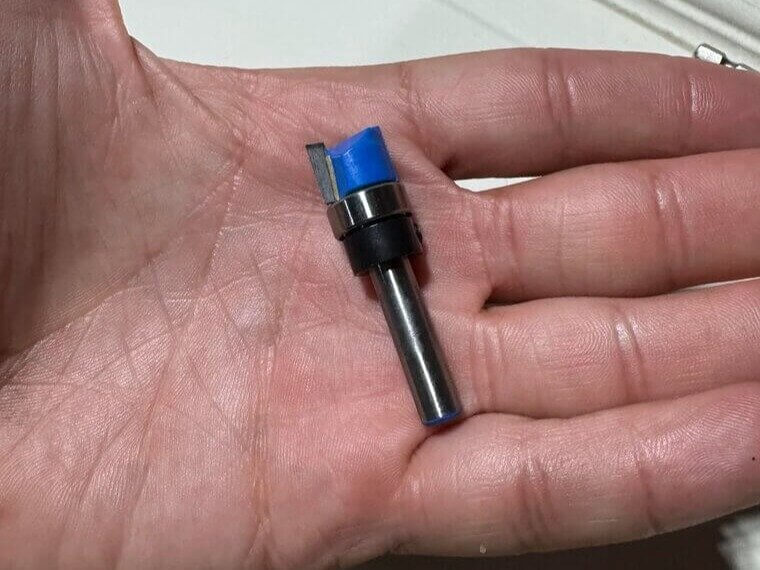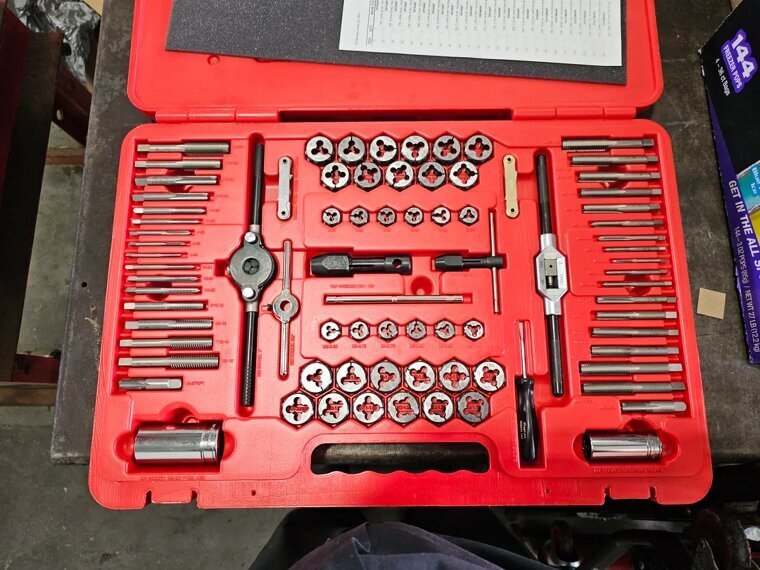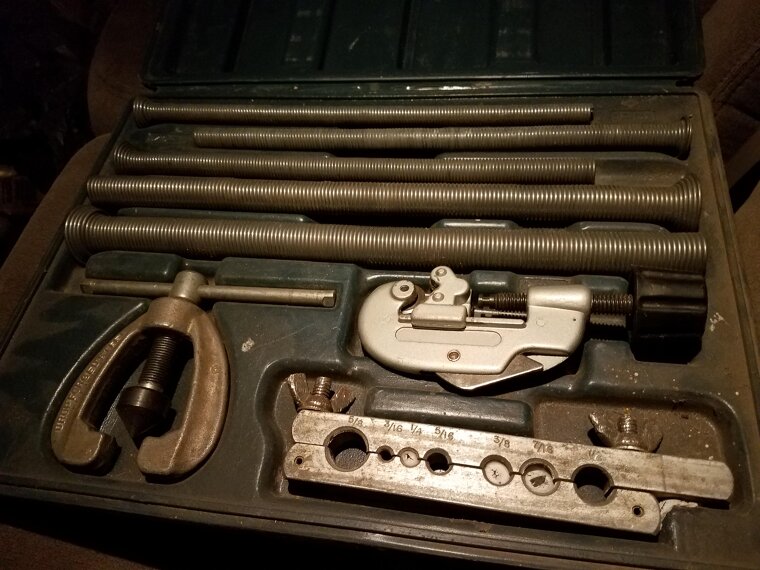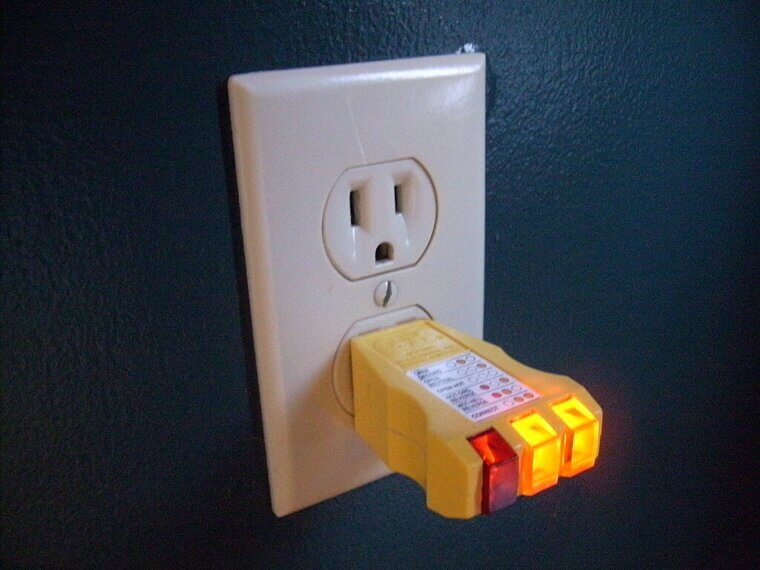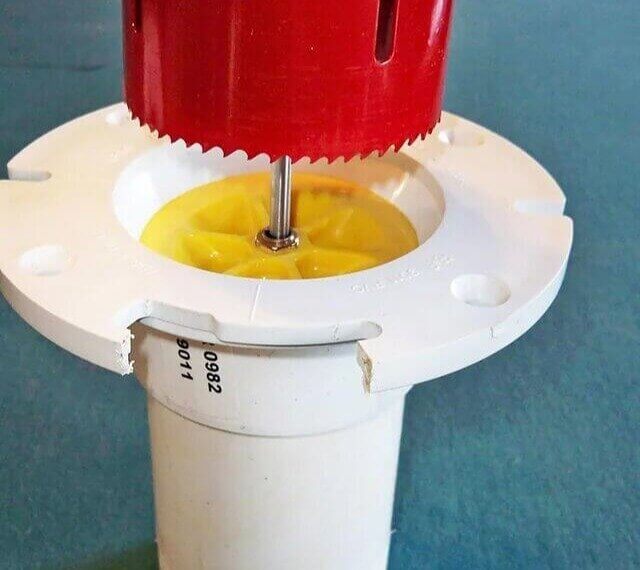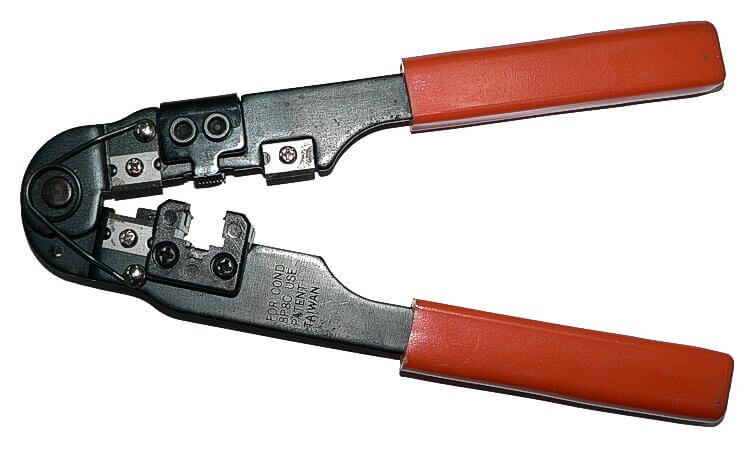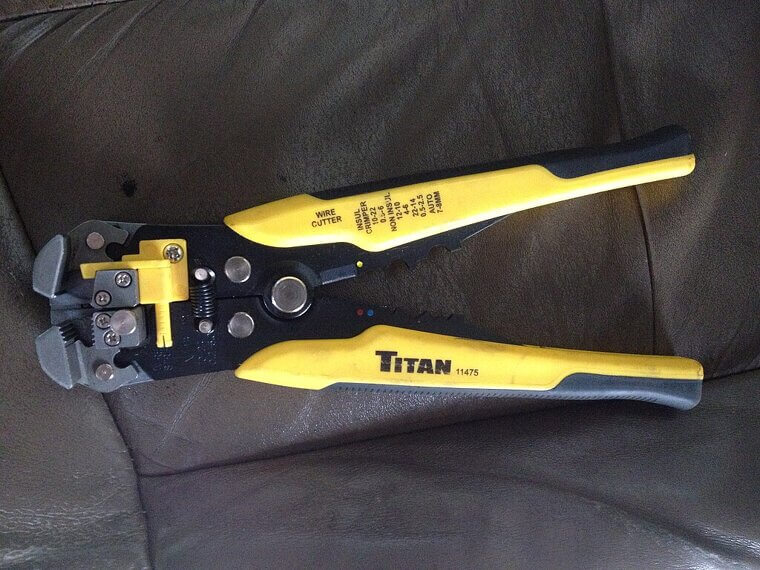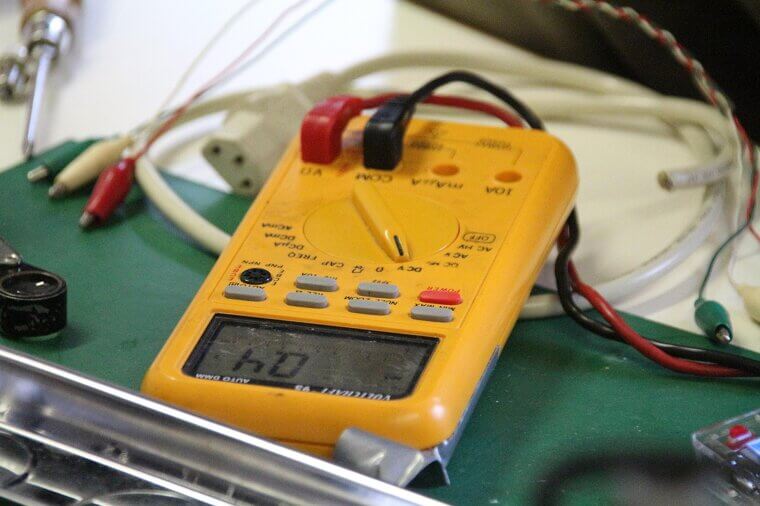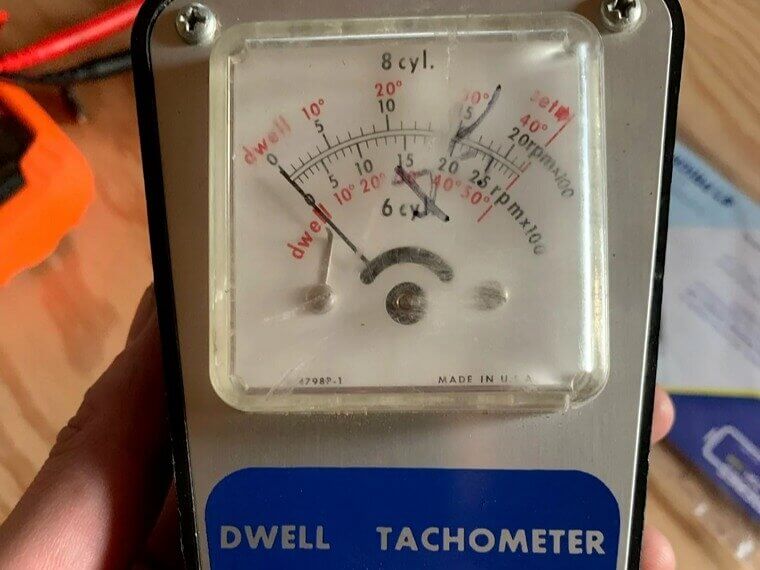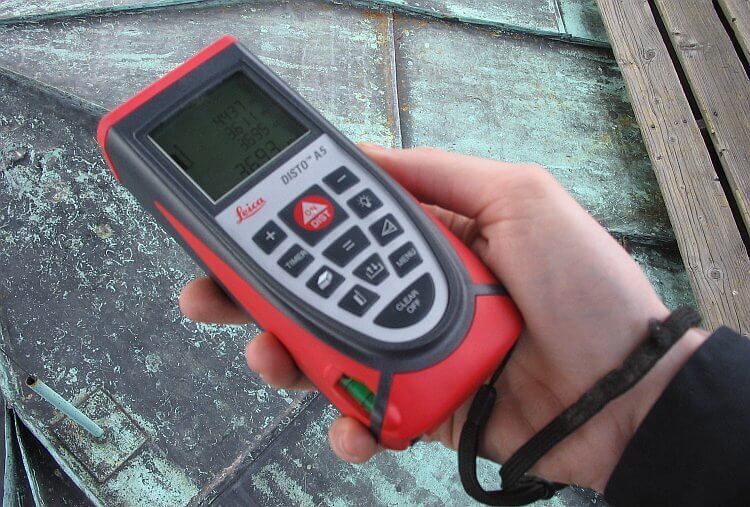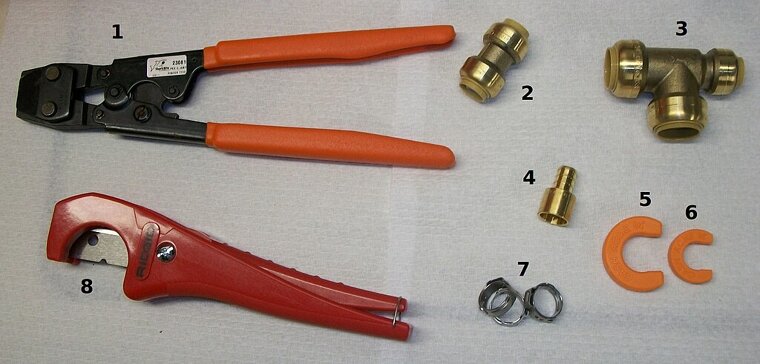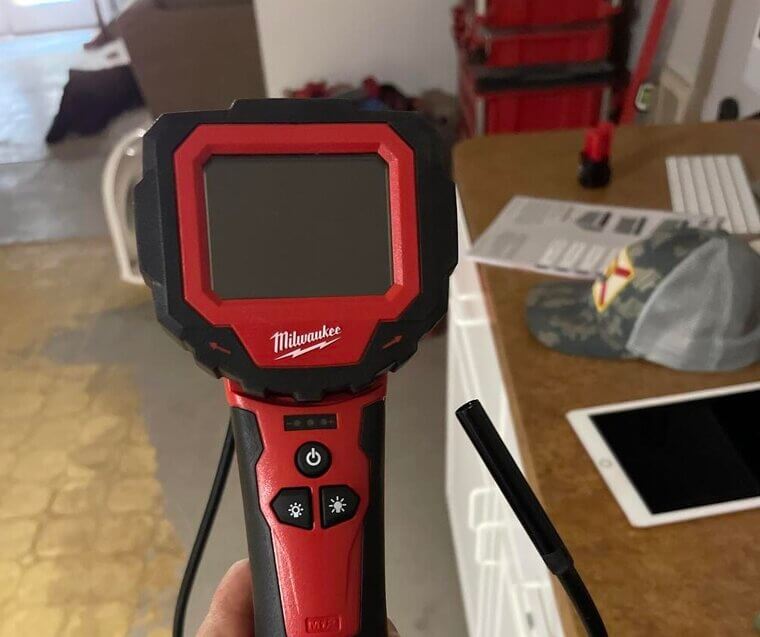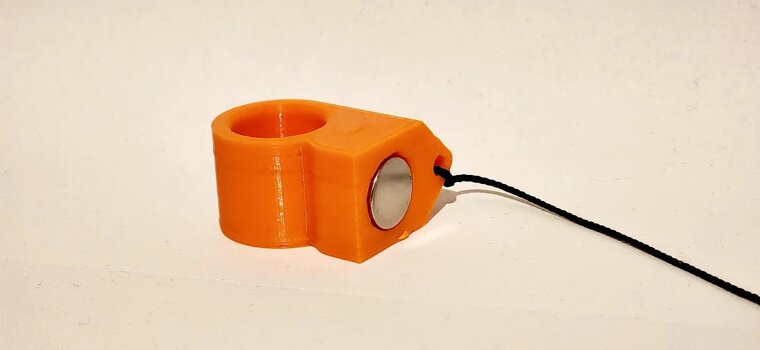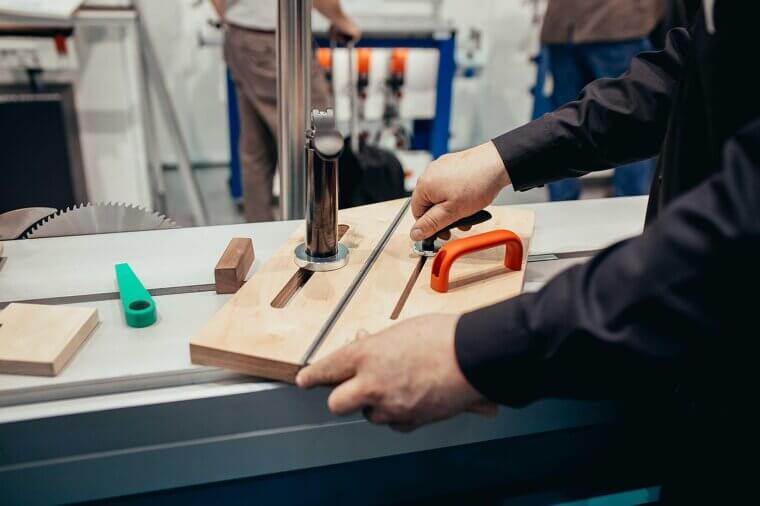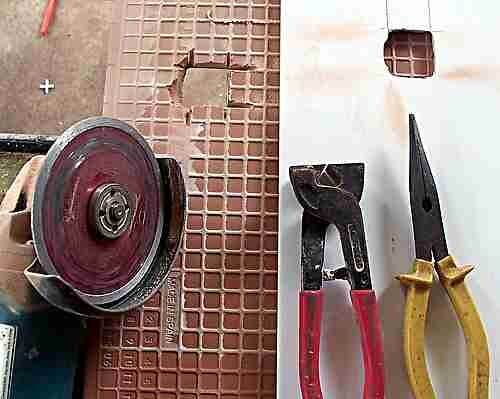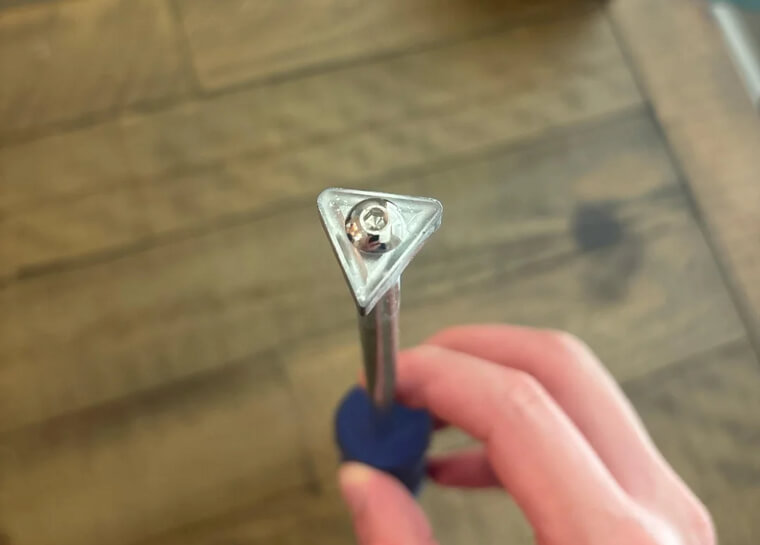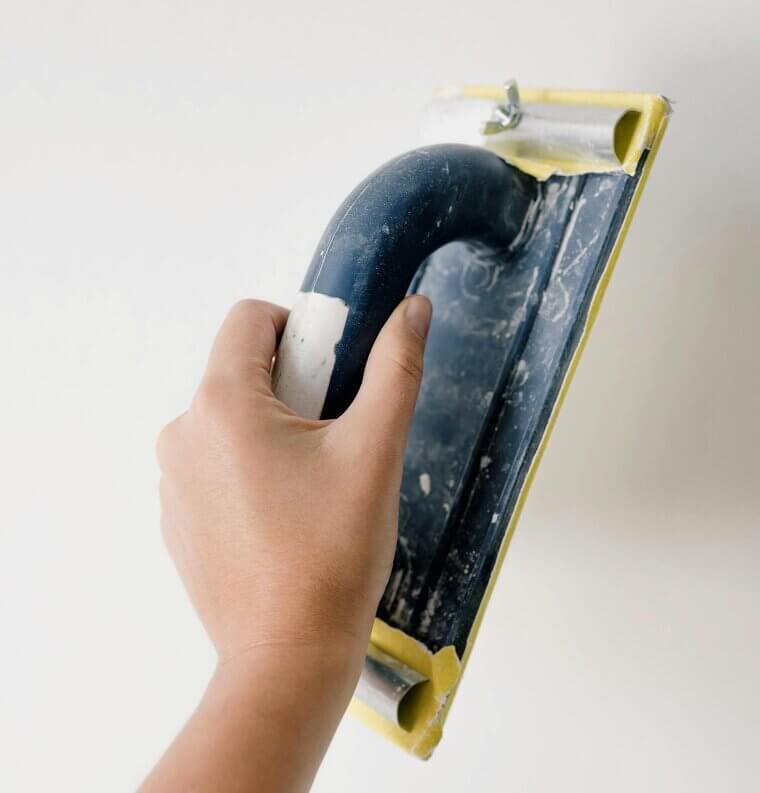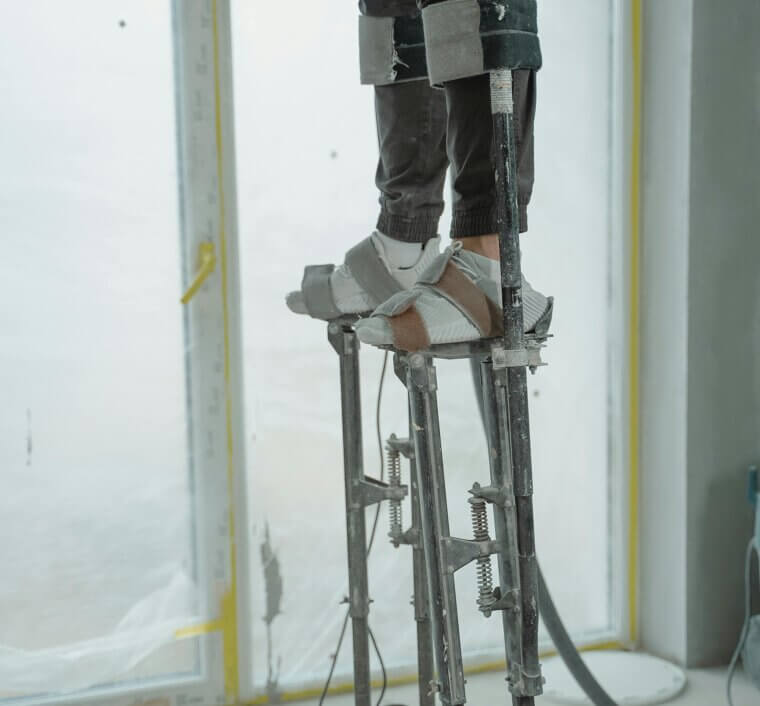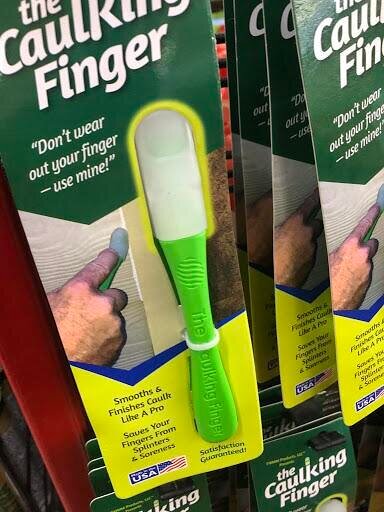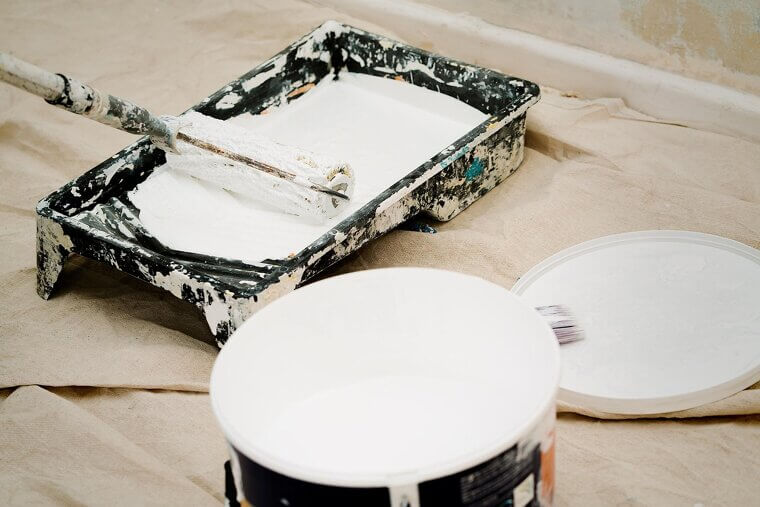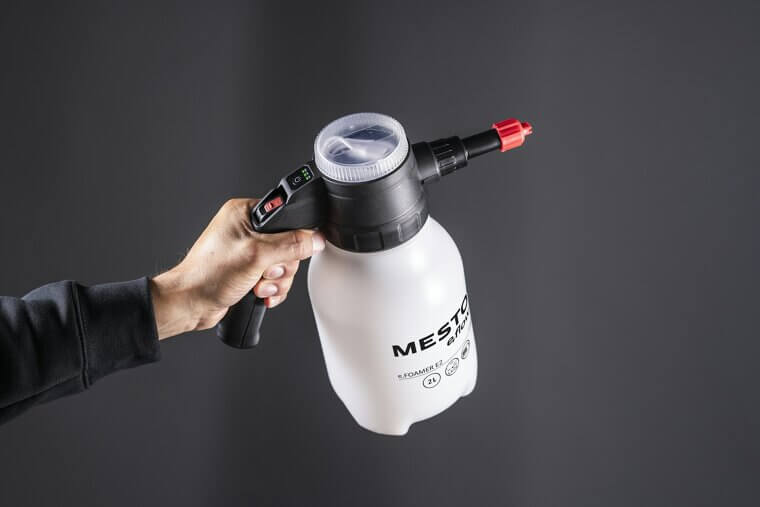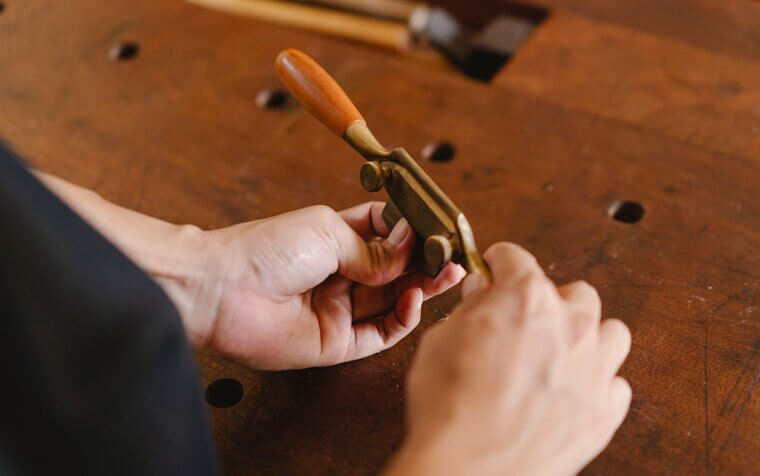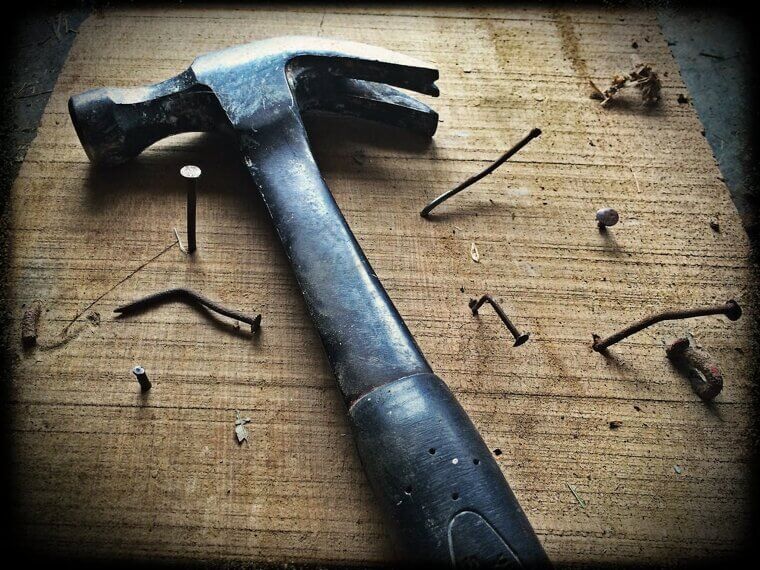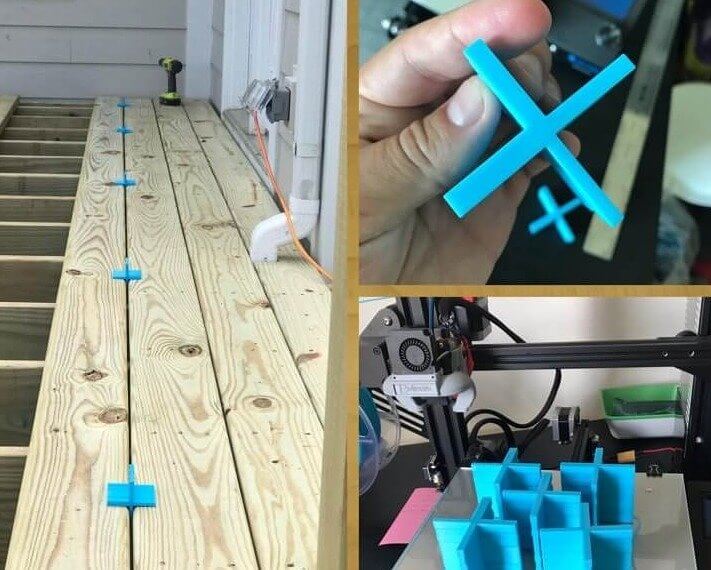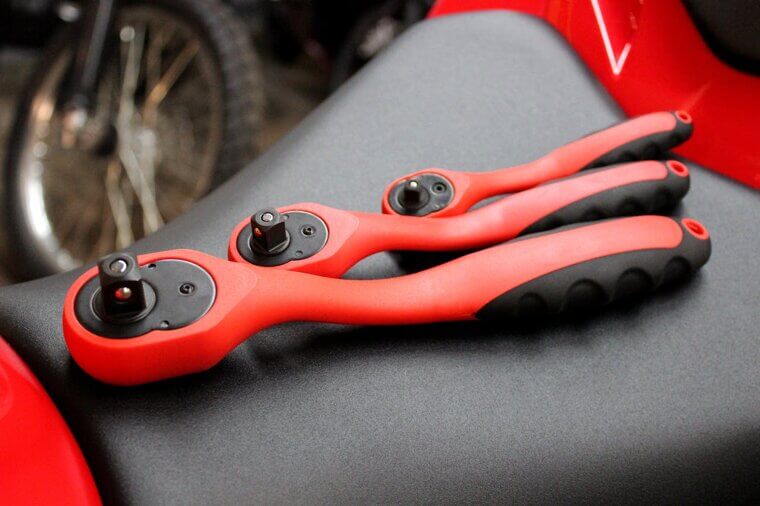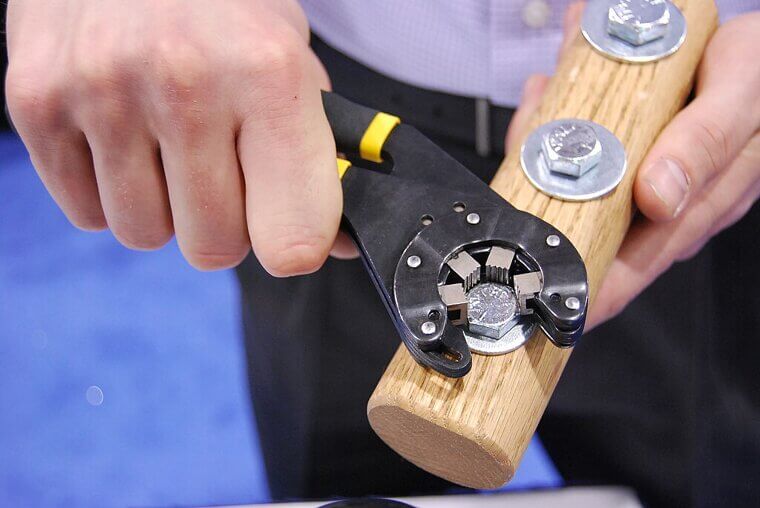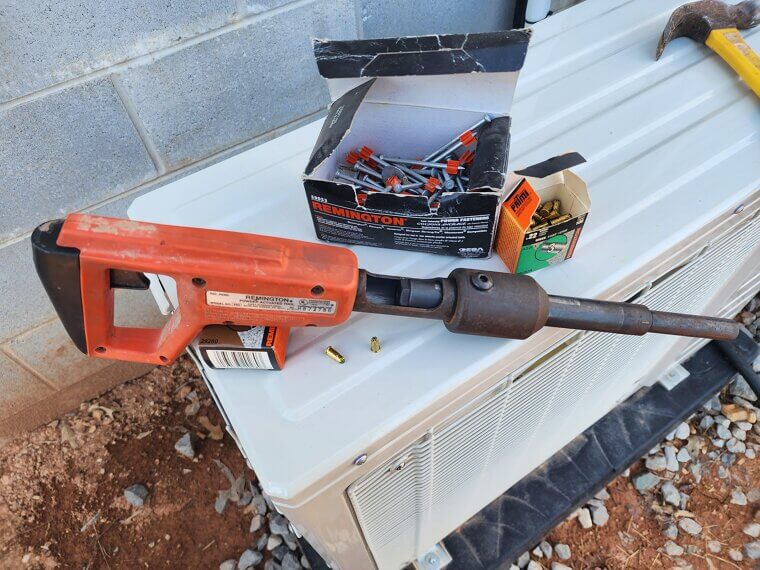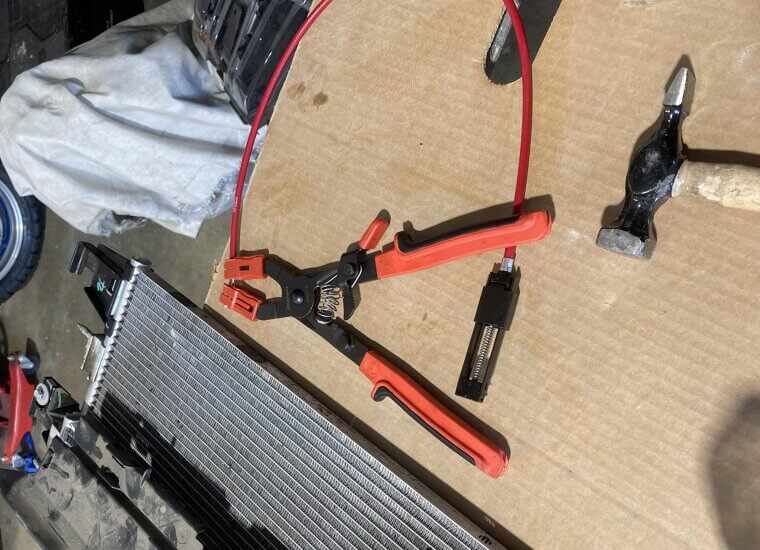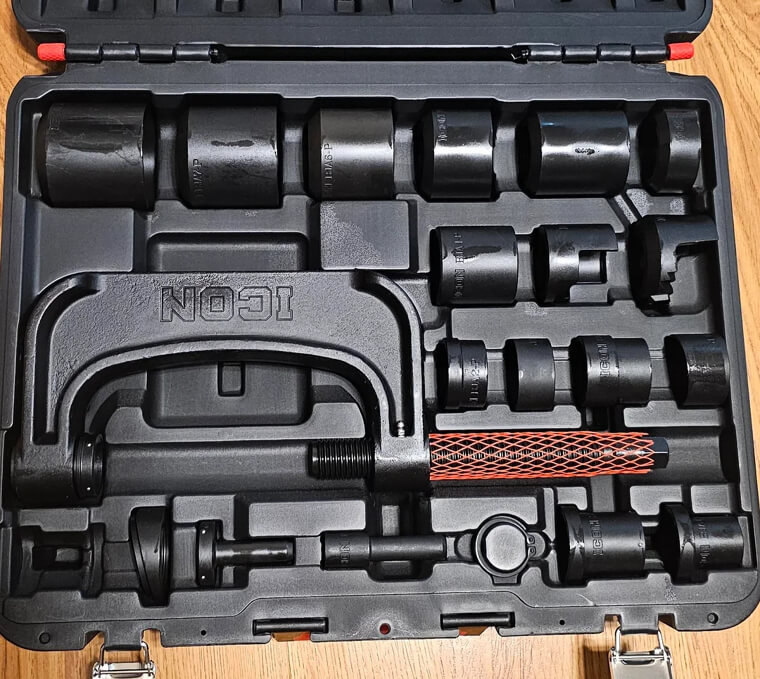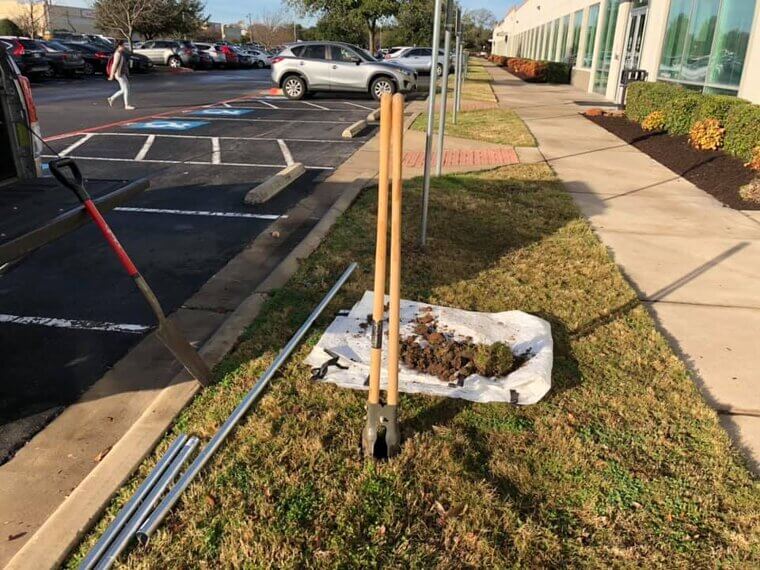Electric Heavy-Duty Staple Gun
A powerful, corded, or battery-powered stapler, which is great for thick upholstery or light framing. While it is fast, it isn’t convenient, and the standard manual spring-action staple gun can handle almost all homeowner reupholstering and tacking needs with less bulk and cost.
Biscuit Joiner
This bulky contraption promises professional alignment, but mostly delivers a vague, wobbly slot. It's probably currently sitting on your shelf somewhere, patiently waiting for that one specialized project that you will inevitably decide to just use glue and clamps for anyway.
Pocket-Hole Jig
The ads make it look so easy to whip up furniture with pocket holes. It offers a fantastic system for creating hidden, angled screw joints, which gives cabinets a clean look. However, let’s be honest, the average homeowner doesn't build enough custom cabinetry to justify this item.
Benchtop Planer
These are mostly purchased when you’re under the grand illusion of turning rough lumber into glorious, perfectly dimensioned boards. Now, it mostly serves as a very heavy, very dusty tribute to that vast and beautiful pile of rough-sawn lumber sitting on your driveway. You’re better off without it.
Pause and ask yourself: “Will I really use this?”
Pause and ask yourself: “Will I really use this?”
Specialized Wood Clamps
A collection of ingenious, hyper-specific devices designed to solve a single, complex clamping problem you faced exactly once in 2018. With some creative clamping and careful alignment, you can easily bypass these for the basic bar or C-clamps already in your toolbox.
Door-Hinge Mortise Template
Marketed as the secret to perfect hinge recesses, but is it? Apparently not. Unless you’re hanging a houseful of doors, a chisel and a steady hand will do the trick. The template often becomes another single-use gadget that gets tucked into a drawer “just in case.”
Full Tap-And-Die Set
A tap-and-die kit looks indispensable for restoring threads or making custom bolts. It's a lifesaver for antique machinery or auto repair, but let’s be honest, the average homeowner will rarely encounter a stripped thread that is unique enough to warrant this expensive, multi-piece set.
Let’s banish a few more one-time-use tools!
Let’s banish a few more one-time-use tools!
Flaring Kit
The flaring tool kit is perfect for creating flares for brake lines or copper pipes. But if you’re not frequently repairing cars or doing major plumbing work, it’s too much. This type of connection is rarely encountered in standard repairs, making it pure overkill.
GFCI Tester (Button)
The GFCI outlet tester is a smart plug-in device that quickly checks for proper wiring. However, the basic test can be performed by a simple, reliable voltage stick, and the dedicated GFCI test button on the outlet itself makes this secondary tool redundant.
Now, let’s tackle some plumbing and electrical oddities…
Now, let’s tackle some plumbing and electrical oddities…
Toilet Flange Setter
The toilet flange setter is a plastic guide or ring used to help align and install a toilet flange perfectly during a renovation. A quirky device meant to simplify toilet installs. But there is a problem: most people install a toilet once a decade.
Cable Crimpers (Ethernet/Coax)
These pliers attach plastic or metal connectors to the ends of data or coaxial TV cables. But unless you’re a professional setting up custom-length cables routinely, there are very few times you’ll need to use this tool. Certainly not enough to justify the cost and space.
Automatic Wire Strippers
Although automatic wire strippers promise faster stripping, they’re often bulky and unnecessary for light electrical work. In many cases, a simple, fixed-gauge stripper will be cheaper, more reliable, and perfectly adequate for the occasional light switch or outlet replacement job.
There are a lot more impulse buys left to review…
There are a lot more impulse buys left to review…
Stud / Voltage Finder Combo
A gadget that combines two features sounds clever, but trying to pack two vital functions into one unit often results in compromised accuracy for both. Most seasoned DIYers prefer to revert to basic stud finders or manual methods.
Non-Contact Tachometer
The non-contact tachometer uses a laser to measure the RPM (revolutions per minute) of a spinning shaft. Unless you’re frequently tuning up small engines or calibrating industrial machinery, this tool is just a fancy, rarely used toy that’ll sit in some sad corner of your house for most of its life.
Let’s shed light on some fancy gadgets as well…
Let’s shed light on some fancy gadgets as well…
Laser Distance Measurer
This device utilizes laser technology to measure the distance across a room quickly. While it is fast and fun, a reliable, quality tape measure will provide the same necessary accuracy for most home measurement tasks.
Plumbing Crimper
PEX crimpers are a godsend for big plumbing installs. It can compress metal rings onto PEX plastic tubing, creating a secure and modern water line connection. However, since most basic plumbing fixes don't involve installing new PEX systems, it is rarely used.
Inspection Camera (Borescope)
The borescope is basically a tiny camera attached to the end of a flexible tube used to peer inside walls or pipes. It's great for mysterious leaks and randomly peeking into pipes and walls, but most people don’t normally need to look into a tiny, hidden cavity that often.
Magnetic Stud Finder
While the idea of a tiny tool detecting screws behind drywall sounds tempting for its simplicity, it is notoriously unreliable and often misses the stud entirely. A quick knock test or an electronic stud finder usually locates studs more reliably.
Wet Tile Saw
A tool necessary for making curved cuts in hard materials like porcelain or stone. But although it is fantastic for precision tile cuts, it is heavy and messy to clean. For the vast majority of simple, straight-cut tiling jobs (like basic subway backsplashes), a far cheaper and less messy manual tile scorer is sufficient.
Tile Nippers
These pliers are used to take small, precise "bites" out of tile edges to fit irregular shapes. They are only used when a wet saw is impractical and are mostly a complete exaggeration for the typical, straightforward square-edge tile project.
Be honest… You have a few of these lying around, don’t you?
Be honest… You have a few of these lying around, don’t you?
Grout Saw / Remover
A manual grout saw is handy for small repairs but not much else. Its small, carbide-tipped scraper is used to dig out old grout lines for renewal. But since regrouting is a huge, messy job done infrequently, this is a perfect tool to borrow or rent rather than own.
Wall-Corner Sanding Tool
A sanding block or accessory designed specifically to get into the inner corner where two walls meet. The only drawback is that a simple sheet of sandpaper folded into a ninety-degree angle will achieve the same result without the clutter.
Drywall Stilts
Drywall stills are adjustable aluminum leg extensions used by pros for working on high ceilings. Unless you are a full-time professional finisher, the safety risks and infrequency of use make a simple, stable step ladder the superior and smarter choice.
Some more items that rarely make it out of the original packaging…
Some more items that rarely make it out of the original packaging…
Caulking Finishing Tools
These finishing tools promise perfect beads, but let's be honest, they usually end up lost in a drawer. The traditional, time-tested method of using a wetted finger or ice cube is often more intuitive, faster, and delivers a better final result.
Paint Edger Tool
A small roller or pad attached to a wheel and a guard, promising perfect lines without painter's tape. While they’re supposed to eliminate painter’s tape, real walls and corners rarely come out looking as good and neat as the demo.
Electric Paint Sprayer (HVLP)
Promising a flawless, professional finish, the high-volume, low-pressure sprayer is an incredible temptation. And while it is fantastic on paper and provides uniform coverage and fast work, cleaning it can take longer than painting with a roller.
Some tools may look cool, but aren’t that useful…
Some tools may look cool, but aren’t that useful…
Oscillating Tool Scraper Blade
The versatile multi-tool is great, but its specialized attachments, such as the stiff blade for scraping floors, are only useful for specific demo jobs. Unless you are removing old vinyl or adhesive, this is something that will get bought for one job and then rarely used again.
Sheet-Metal Nibbler
This specialty cutter cuts through sheet metal by taking tiny, rapid "bites." It's great for custom HVAC or ductwork, but the average DIY project only requires simple metal shears for quick, short cuts, making the nibbler a bit too specialized.
Specialized Deck-Board Spacers
These plastic or metal jigs are used to ensure consistent spacing between new deck boards. A simple, straight nail or a scrap piece of wood provides the necessary spacing for free, instantly making the dedicated spacers inessential.
The last few items might have you questioning your purchase decisions…
The last few items might have you questioning your purchase decisions…
Universal 48-In-1 Socket Wrench
This multi-headed gadget promises to replace an entire socket set and looks clever on TV. In reality, it is bulky, often slips, and provides poor leverage compared to a dedicated ratchet and socket, making it a frustrating knick-knack.
Bionic Wrench
A unique, adjusting wrench that claims to grip a bolt head on all six sides. The awkward size, wide handle spread, and difficult release make it unusable in the tight spots where a regular wrench or socket would be far more effective.
And a few tools that are only used in an automotive capacity…
And a few tools that are only used in an automotive capacity…
Automatic / Powder-Actuated Hammer
This masonry uses an explosive charge or batteries to drive nails into concrete or steel. While it does pack power, it is hazardous and unnecessary for the average DIYer, whose simple concrete anchoring needs are solved by a drill and tapcons.
Hose-Clamp Pliers
Hose-Clamp pliers are special pliers with long, flexible cables that are used to reach and remove tight hose clamps deep within an engine bay. This is a purely automotive specialty tool with no application in common home repair or plumbing tasks.
Ball-Joint Press
A ball-joint press is a large, heavy-duty C-clamp tool vital for pressing specific automotive parts (like ball joints) out of their housings. However, the problem is that they are huge, expensive, specific to mechanics; they have zero function outside of car suspension repair.
Post-Hole Digger (Clamshell)
The two-handled, scissor-like tool is great for manually digging fence or deck post holes. However, unless you’re landscaping regularly, the back-breaking effort required means this tool is quickly abandoned in favor of renting a power auger for any significant number of holes.

